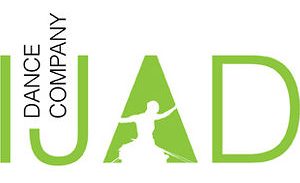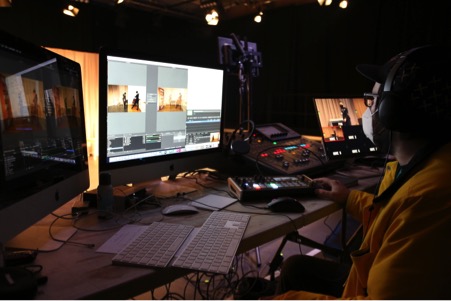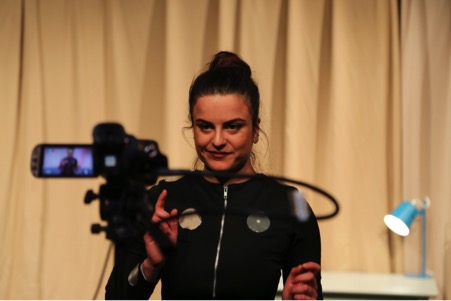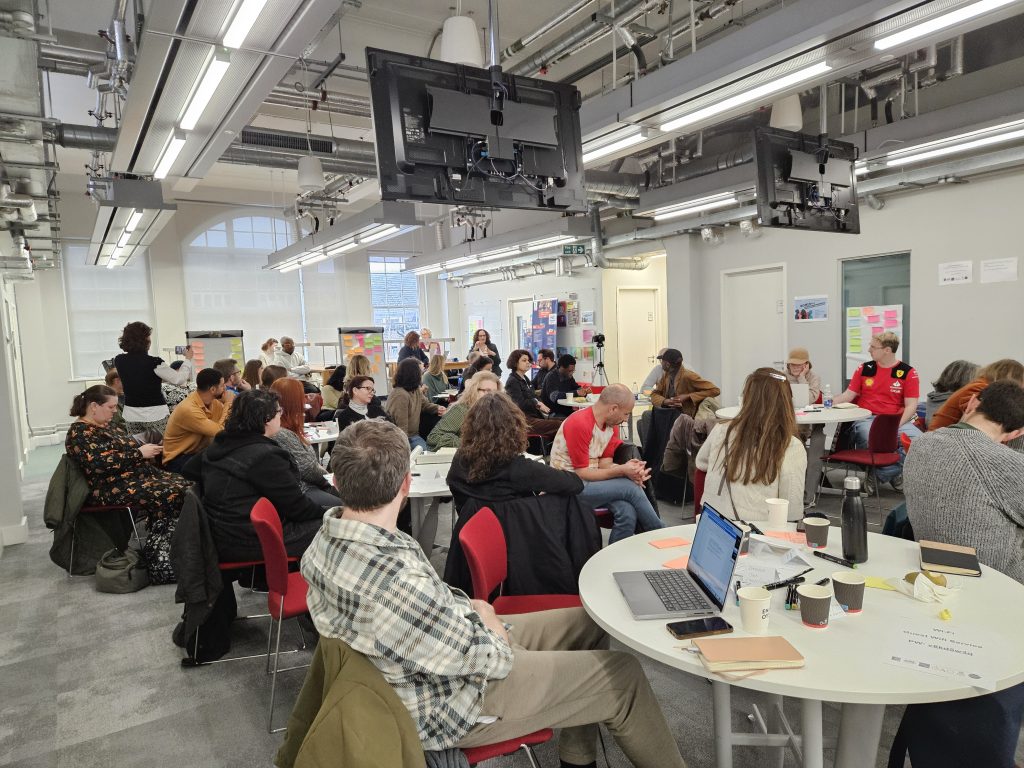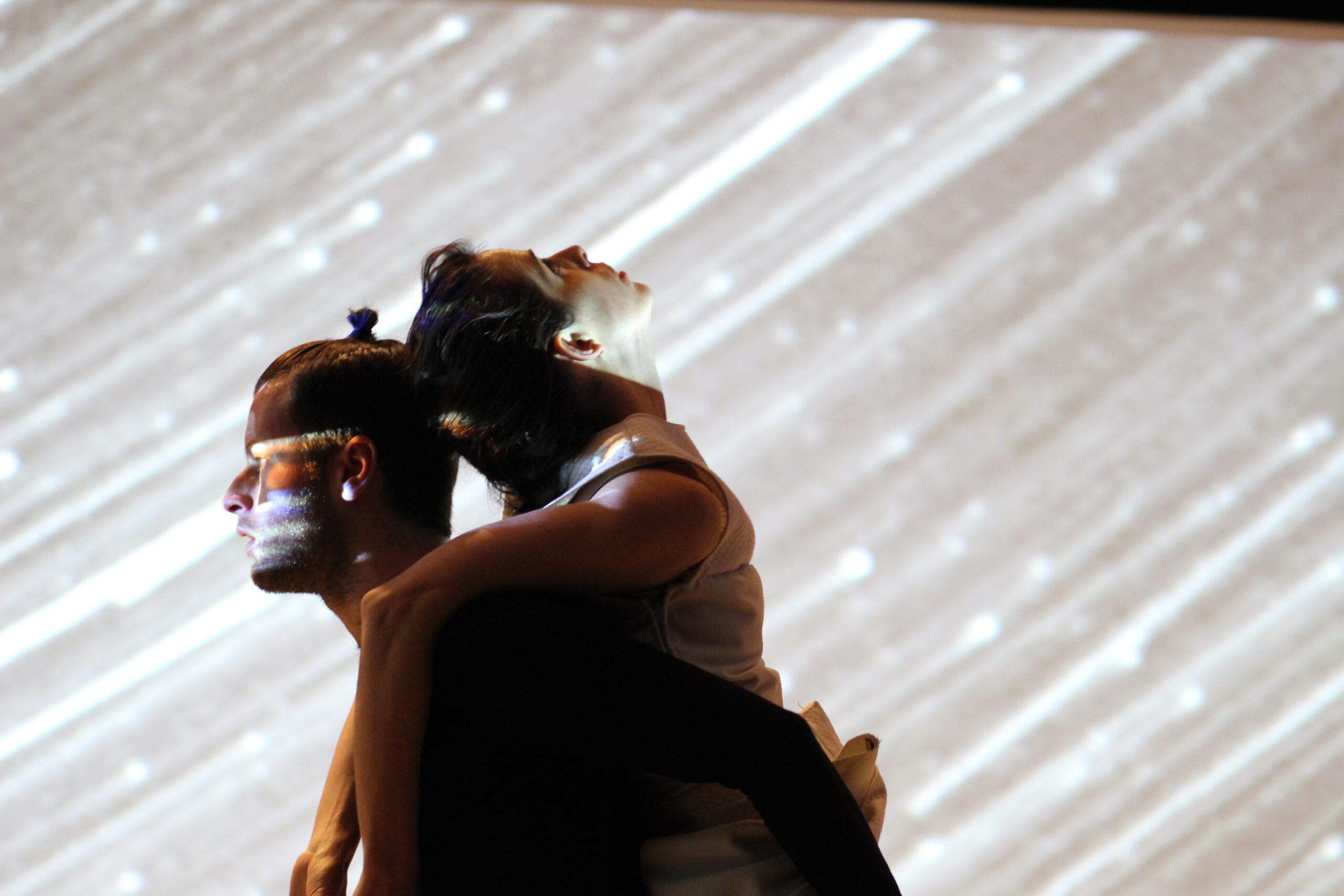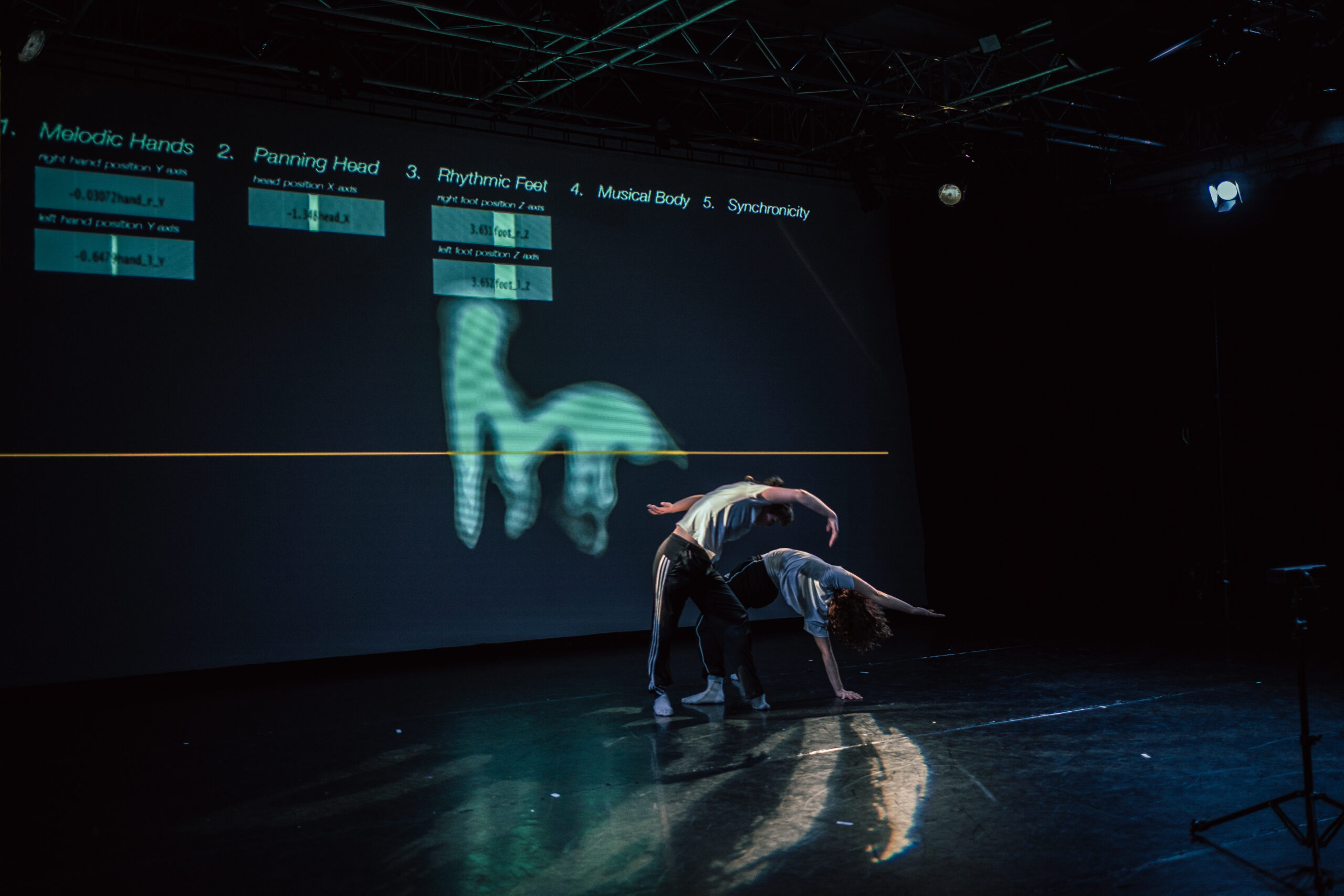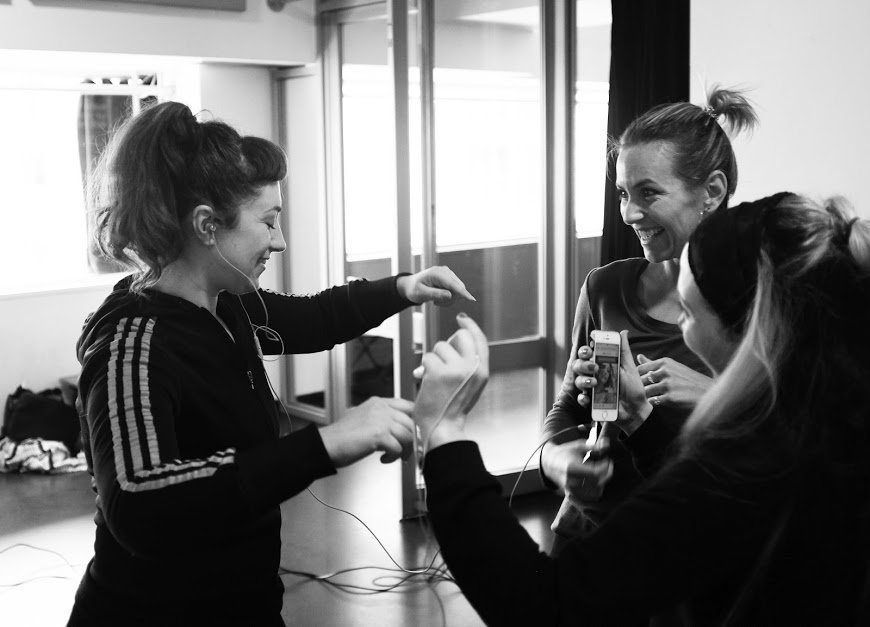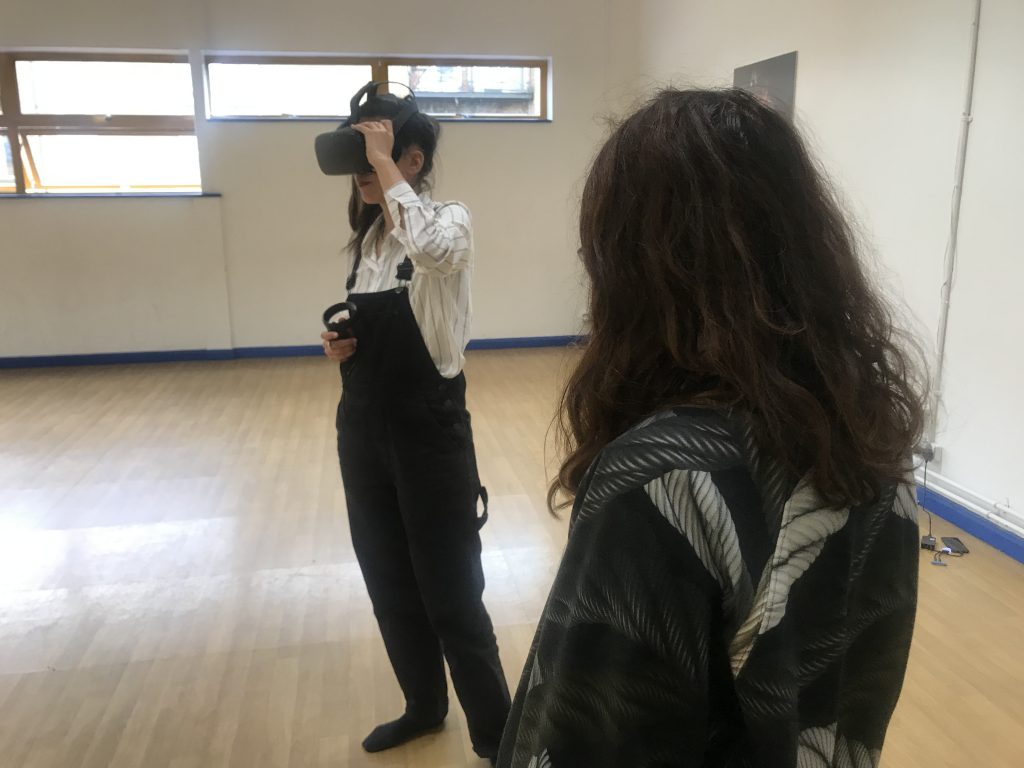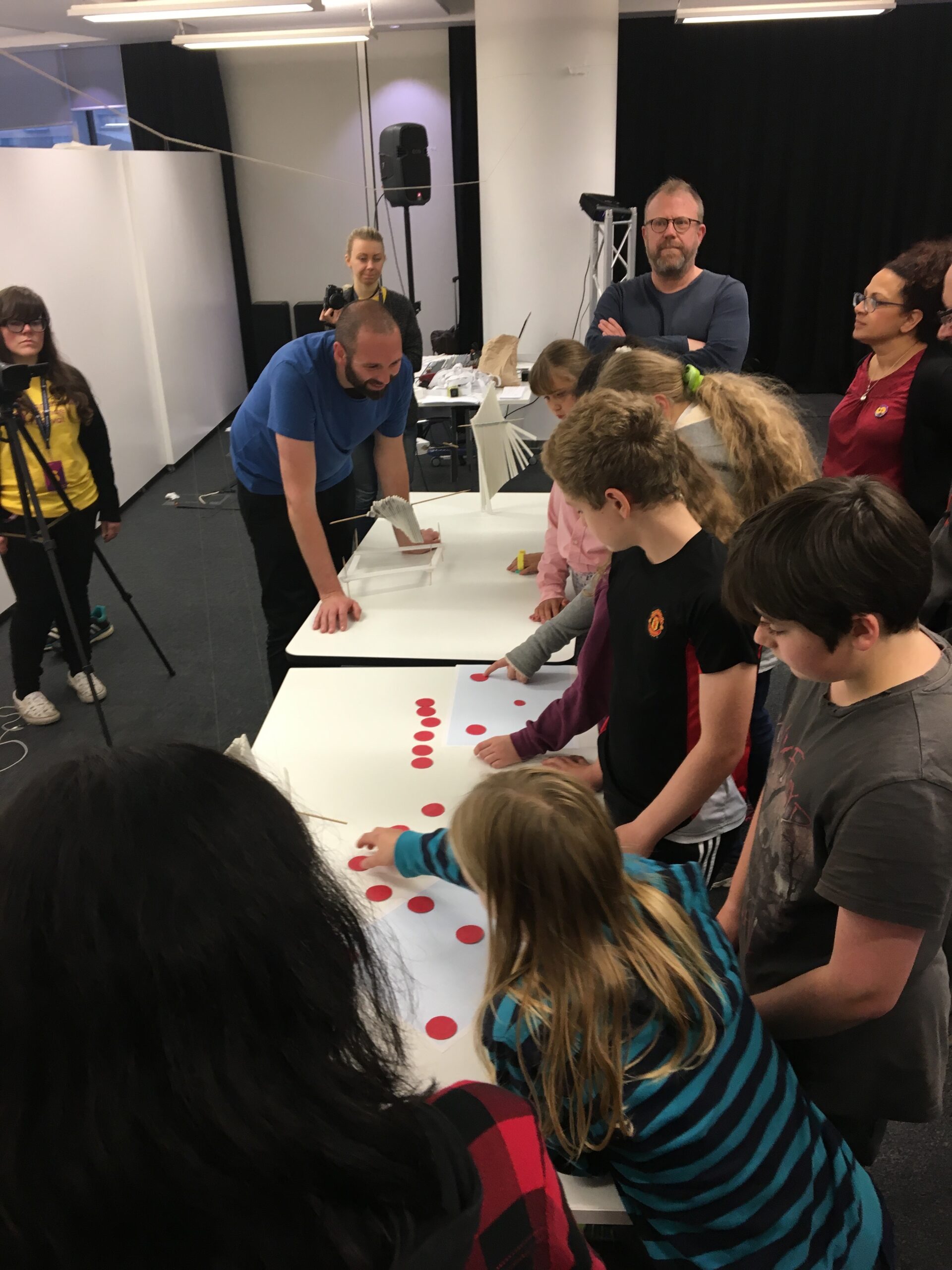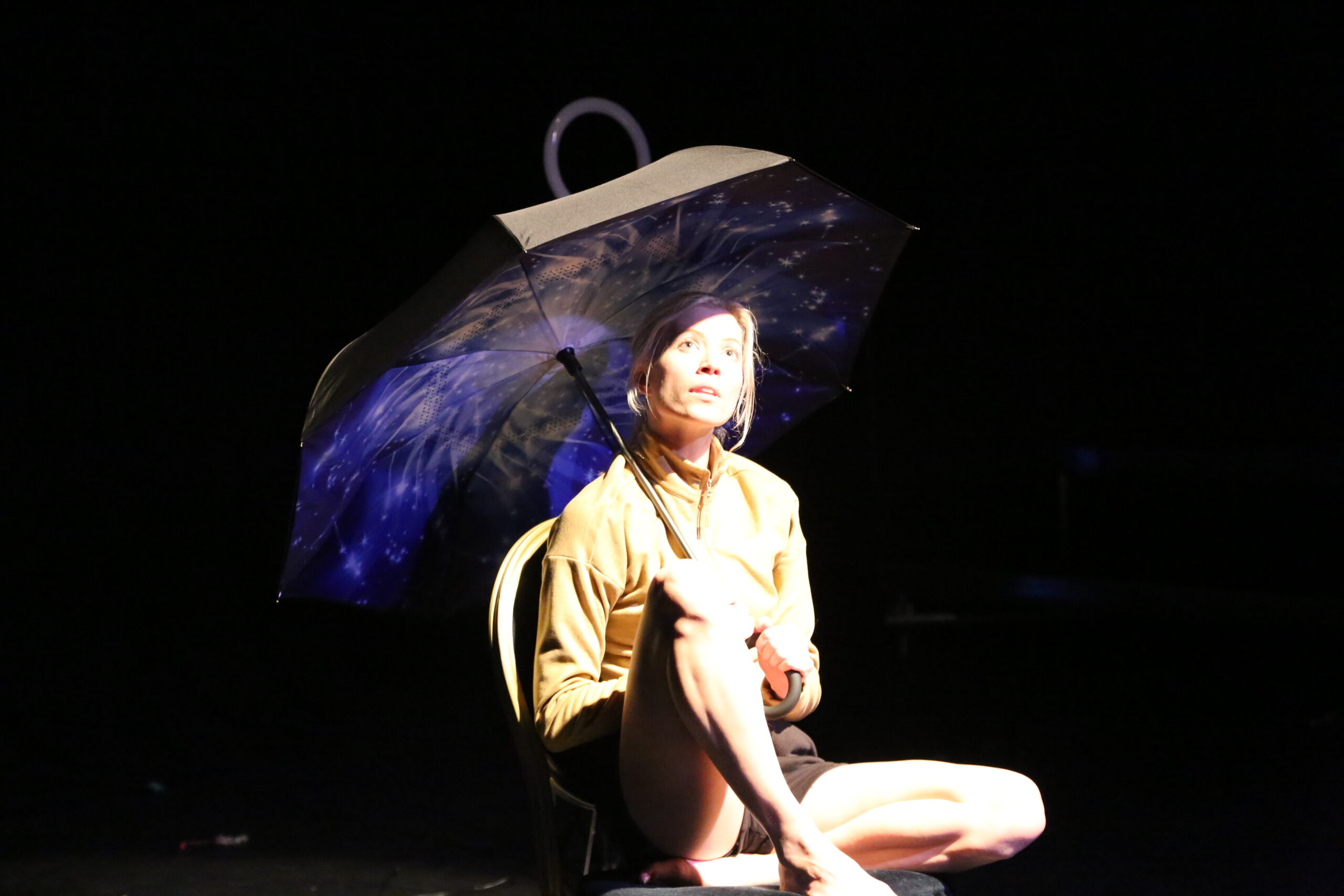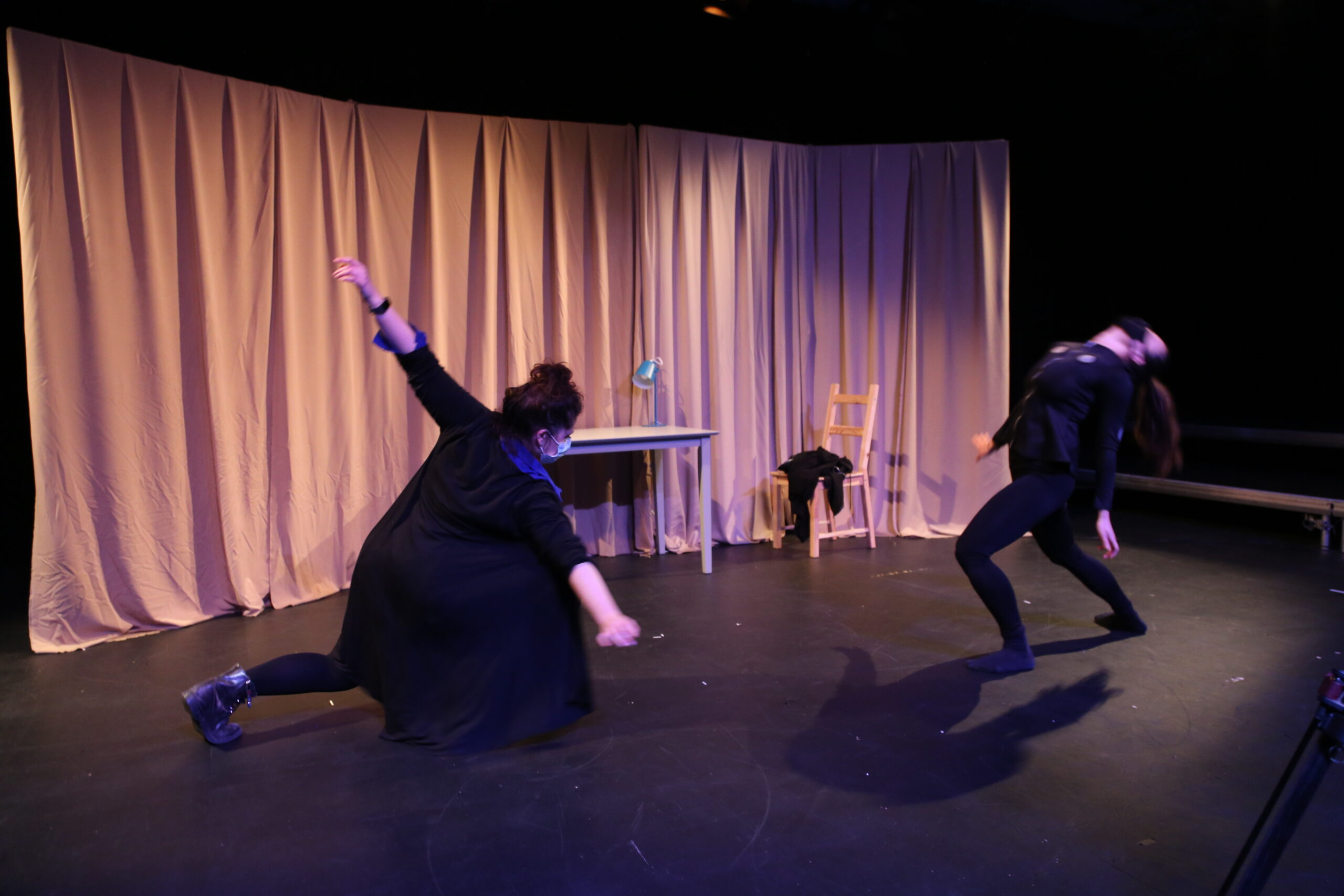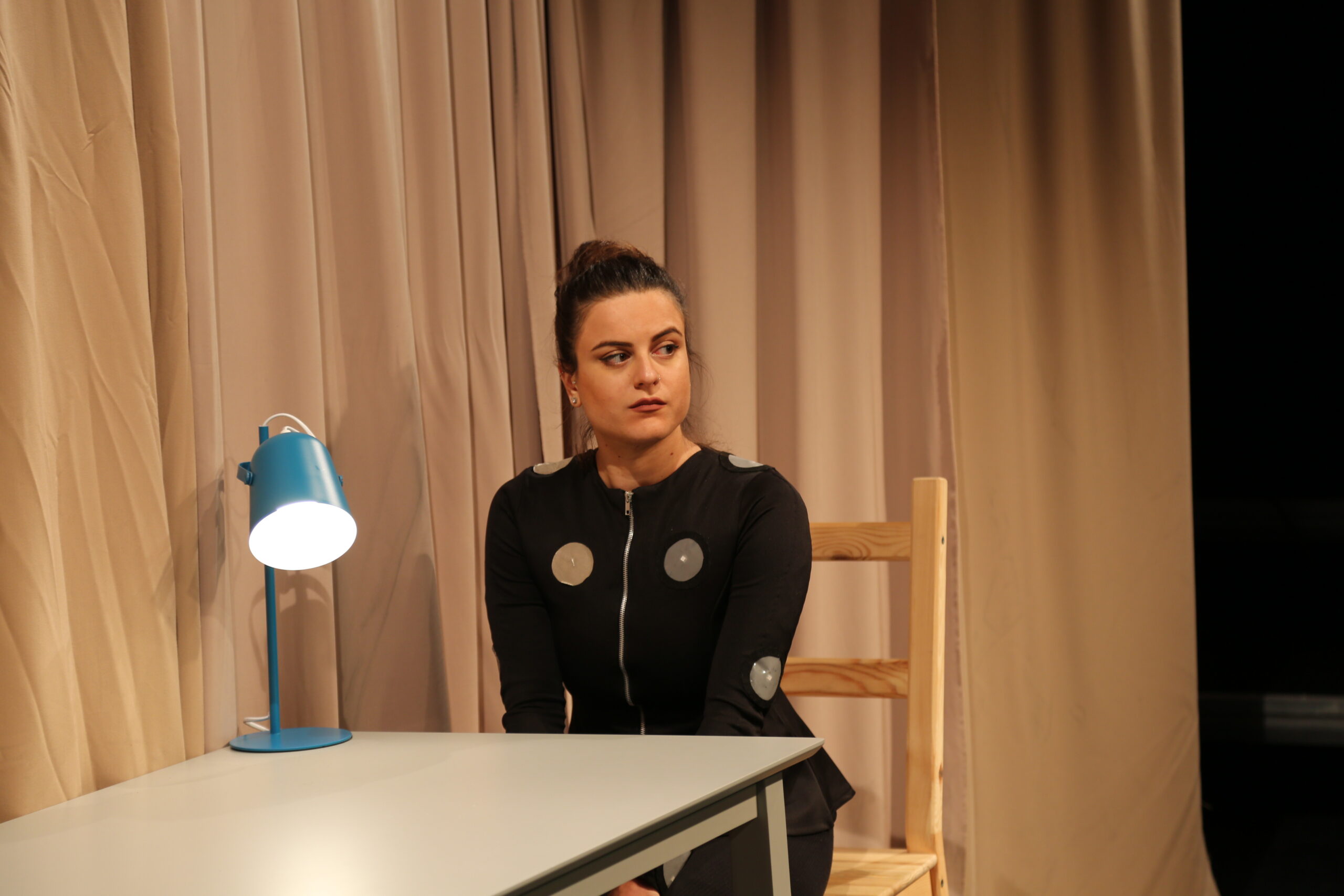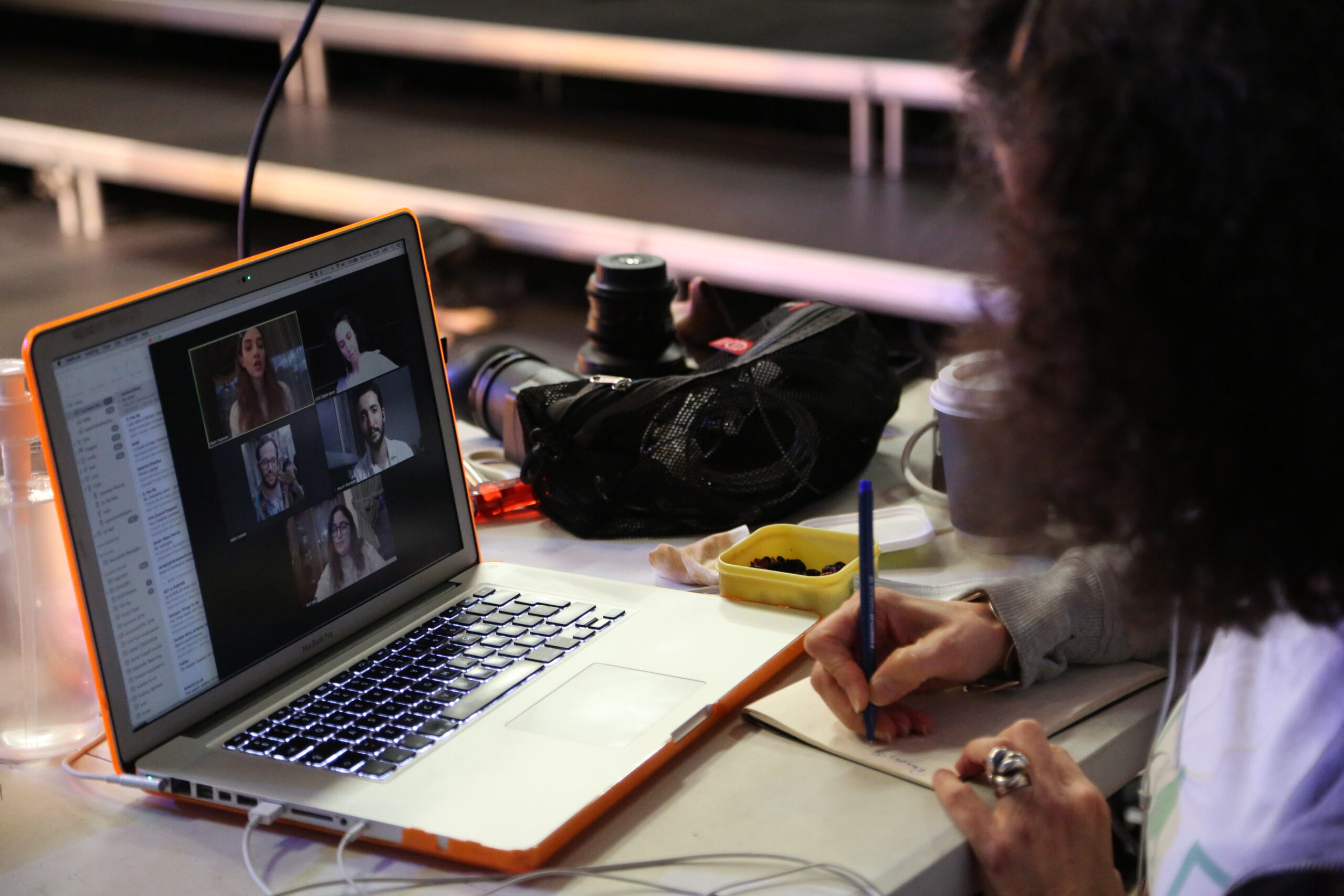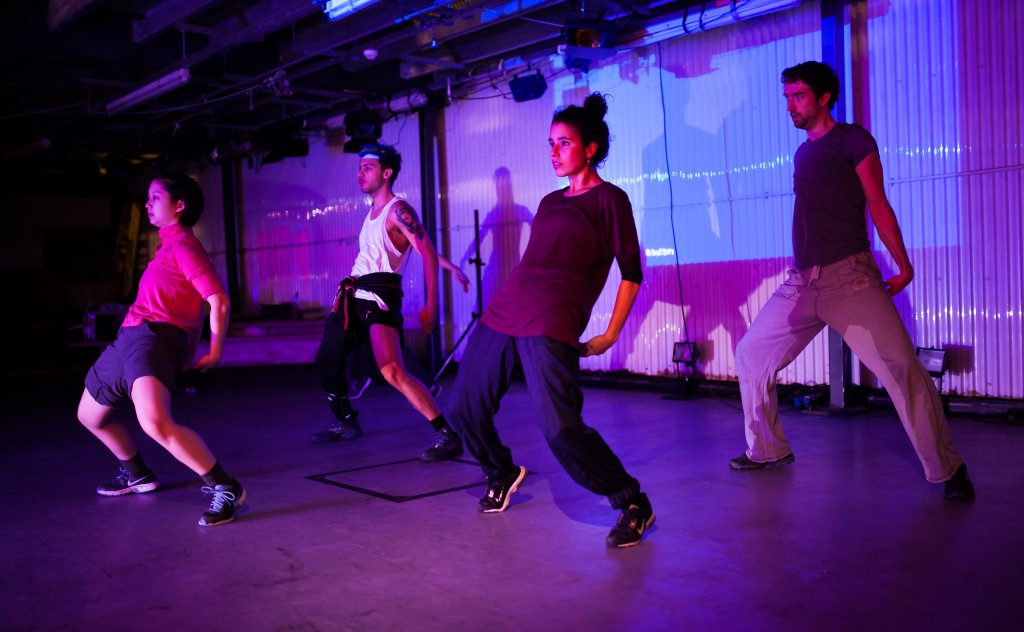Becoming Hybrid

Over 92% of UK adults own a smartphone, and around 171 million people worldwide are using VR, with this appetite for new tech growing exponentially. Performing Arts is an early-adopting sector, due to the seemingly infinite creative possibilities offered by embracing and combining new technologies.
At this exciting time in performing arts, when emerging technologies are offering new ways to share ideas and really involve audiences, we invite you (artists, producers, technologists, curators, academics) to join us in discussion and experimentation at this fast-growing intersection.
What is hybrid performance?
‘Hybrid’ is generally used to describe a performance experienced by both live and remote audiences, but at IJAD we see it more as the potential to interweave a variety of innovative digital options within the creative process.
This offers a huge evolution of the ways narratives and artistic ideas can be developed and shared, leading to new forms and areas of experimentation: audience interaction in VR or by phone app, motion-capture, infrared tracking, with visuals and sound activated by movement, and more.
Work with hybridity embedded into it from the outset considers the multitude of possible audience experiences: people using different devices, in different types of location, the level of WiFi connectivity, and the fact that people may be dipping in and out of the performance, behaving in ways unlike traditional theatre viewing.
Audience co-creation
The hybrid artist’s journey with audiences can start with co-creation, where artists employ various methods to engage audiences in creative, artistic activities, such as creative games, feedback, and giving artistic prompts. These lead to rich communication and unpredicted artistic outcomes, while offering audiences a creative opportunity. Online co-creation sessions between artist and audiences can inform a work’s trajectory at the R&D stage and also live, during performances.
In hybrid performance, audiences may be able to interact with performers, and with one another; in VR, either remotely or while in the physical audience; via phone apps, locally, nationally and globally; and affect outcomes and narratives, co-creating work as it happens.
For example, in our latest festival of hybrid performing arts, OOTFest22, Pierre Engelhard’s Synchronicity used social media to request audience movement ideas. These recorded movements were then replicated by dancers in a live performance, in which the choreographies each generated a unique soundscape via the dancers’ body-worn motion-sensors in conjunction with generative music software.
What are the benefits for audiences?
Hybrid performances offer something new and challenging, but it can be difficult for artists to connect with audiences while the use of creative technologies in performance remains outside the mainstream. If we want to bring our audiences along with us on the creative journey, we must consider what the benefits of hybrid performance are for them.
Democratisation of the arts
Co-creation using technologies can take many forms. This democratisation within the arts invites audiences to be actively engaged in choice-making, meaning ‘the artist’ is no longer sole creator of the work.
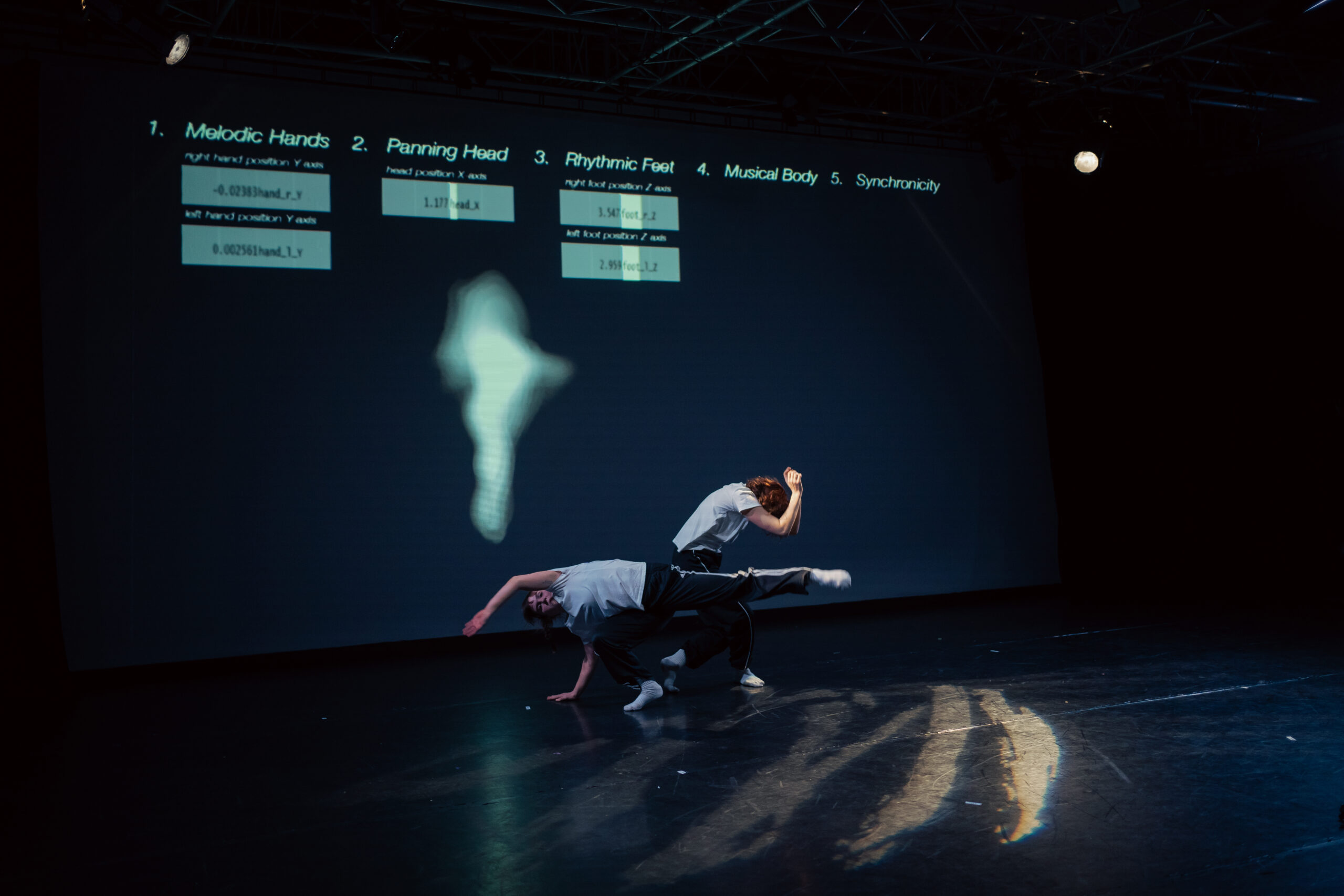
Remote connectedness
Hybridity can give audiences multiple ways to engage in the same performance. OOTFest22 saw Unwired Dance Theatre’s DISCORDANCE offer a choice of levels of immersion and participation, so remote and physically present audiences could either co-exist with the artists in the virtual environment, interacting there with live dancers in London and a dancer in New York, be virtually present in the VR space without interacting, or be physically in the audience, yet experiencing the results of other audience members’ interactions in VR.
Even audiences watching a hybrid performance live in a venue in the traditional way gain a sense of connection with the global others who may be virtually present in their various remote environments. At OOTFest22, the audience at London’s Rich Mix were in a sense remotely connected to the live audiences watching the livestream collectively at the Atelier de Melusine Gallery in France, and other remote viewers worldwide watching from home.

Becoming Post-Human?
Tech hybridity is already an accepted part of our daily life. We can pop into a VR playspace for a one hour game and go back to work, or put a headset on to experience a dance class, an immersive film, or have a meeting with colleagues across the globe.
Is recording your thoughts and ideas on a tablet or a smartphone a hybrid act? Using an electronic hearing aid? A self-drive car? AI? It can be said that interactions between human and tech are merging us into post-human, hybrid beings.
By working with hybrid performing arts, we’re adding to this fascinating evolution, rethinking and re-imagining how technology can improve lives, in terms of health and access as well as entertainment. There are many people with difficulties of access due to physical, geographical, emotional or financial reasons, or caring responsibilities, who may not be able to attend physical performances and for whom hybrid work can open up creative and engagement possibilities.
Who knows, these hybrid explorations might help us push forward to new concepts of reality, new dimensions and understandings of time, space and matter!
We invite you to join our journey into hybridity where access is open, lines are blurred between artist and audience, and we can be a global, mutually supporting network.
Sign up to our newsletter and join the discussion, to evolve the performing arts via our upcoming Ideation Day, (Date TBC) round table and panel discussions, or joining our hands-on tech artist residency, or . . . . we are open to your suggestions. Let’s talk!
Let’s Talk!
We’re excited about where the combined possibilities can lead, and want to open up the conversation by sharing our ideas and experiences, and hearing about yours.
Through our Open Online Theatre (OOT) artist residencies and Connective Matrix discussion forum, we’re exploring what hybridity offers in terms of creation, imagination and collaboration, and of course ways to keep the human aspect relevant.
Stats from: Annual Survey on Consumer Attitudes Towards Technology
and https://www.insiderintelligence.com/content/us-virtual-augmented-reality-users-2021
Poster:Lionel Avignon
Photograher: Michelle Rose
Dancers: Nadine Elise, Phoebe Higgins, Gabby Sanders, Ed Elford.
